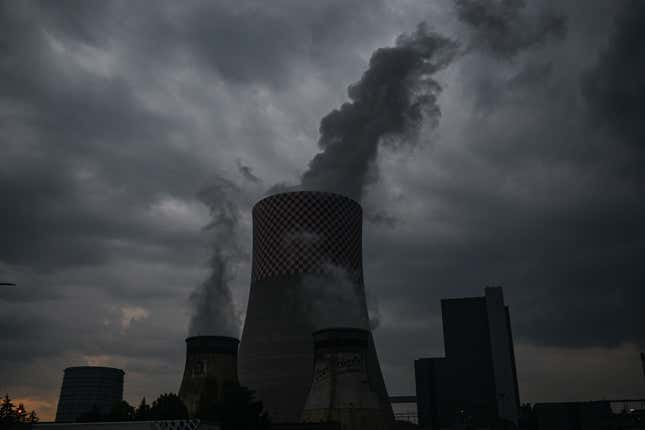
The world’s use of coal will hit an all-time high in 2022, just two years after a steep drop gave hope that the problematic energy source had peaked.
According to a report released last week by the International Energy Agency (IEA), 2022's global coal use will surpass the last record, which was set in 2013. The IEA expects coal use to peak either this year or in 2023, then plateau until 2025, before declining again.
More coal is used in energy generation than any other fuel. It is also the dirtiest of the fossil fuels, making coal the largest single source of CO2 emissions by far.
When the IEA estimated that coal use dropped by a steep 7% in 2020, it was a sign of hope. To believe that coal was on its way out is to believe that the global climate response was headed in the right direction. The IEA’s 2020 report predicted that coal use would not return to pre-pandemic levels.
But a lot has happened since then, and the drop in 2020 turned out to be not as deep as initially expected—4.4% rather than 7%—nor as robust as analysts hoped.
War and weather is driving demand
In 2021, COP26 in Glasgow had a breakthrough that climate negotiators heralded as a step towards the goal to “consign coal to history.” Three months later, Russia attacked Ukraine, sending global energy markets into disarray, reshuffling national energy mixes, and challenging the world’s climate ambitions.
As natural gas prices rose is response to the drop in Russian gas, Europe switched to coal. Droughts and heatwaves in China and technical issues with France’s nuclear fleet—the largest in Europe—meant less hydro and nuclear power that solar and wind couldn’t replace, driving even more demand towards coal and natural gas.
Overall, both Europe and India’s demand for coal rose in 2022. China’s increased slightly from a high base, while coal use declined in the US.
Despite the overall global increase in coal use, it could be worse. Some dynamics are tempering the demand, including high coal prices and the looming recession. China uses about half the world’s coal, but strict covid lockdowns, followed more recently by waves of covid infections that have hobbled factory production, slowed down economic activity, and reduced demand for coal.
The same dynamics are driving renewable energy generation
On the brighter side, the tumultuous year in energy has also spurred investment in renewables. According to the IEA’s 2022 renewables report, the world is expected to install 2,400 gigawatts (GW) of renewable power in the next five years, equivalent to China’s entire power capacity, and a sharp acceleration from previous years. The war in Ukraine may have caused a step backward towards coal, but it also may have caused two steps forward on renewables.